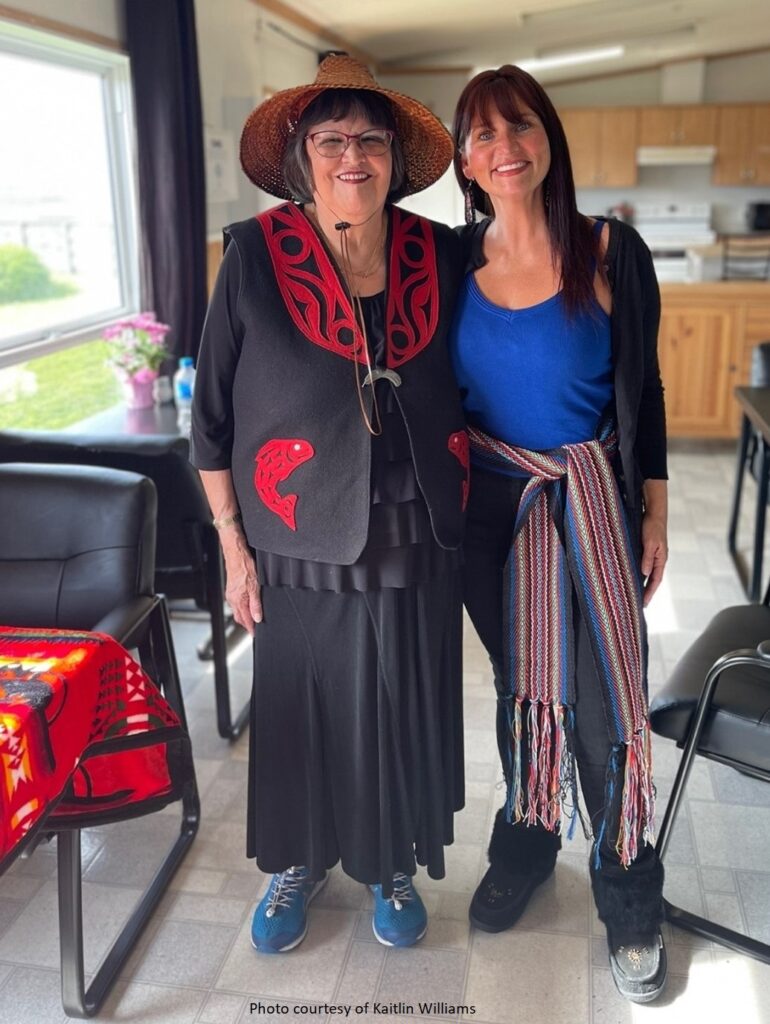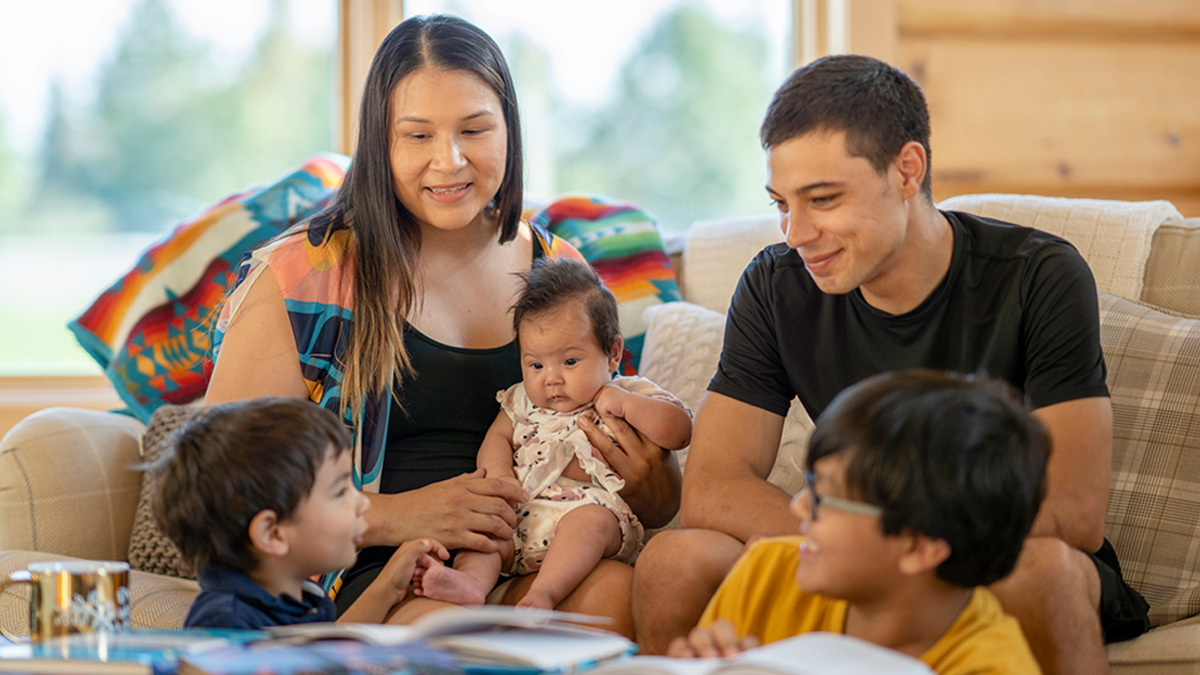Trauma & Healing: How Modern Day Brain Science Meets Traditional Indigenous Teachings – Pt.2
Trauma & Healing: How Modern Day Brain Science Meets Traditional Indigenous Teachings – Pt.2
The following is a conversation between First Nations Elder Ruth Mary Adams & Métis Psychologist, Dr. Jennifer Mervyn
HONORING THE WISDOM OF OUR ANCESTORS
In June, I was approached by Lifespeak to do a Blog for Canada’s Indigenous People’s Day. I ended up co-creating a blog with Ruth Mary Adams, a respected elder from Tsawwassen First Nation who is considered a knowledge-keeper, and partnered with her to weave together neuroscience and traditional Indigenous teachings and knowledge. It hadn’t made sense to me to write the blog on my own as a psychologist, that would be a Western colonial approach to blogging.
In the end of our interview, I had so much content that I couldn’t even include it all! So, for Canada’s National Day for Truth and Reconciliation, I was asked by LifeSpeak to continue that blog, and share the additional conversation pieces and teachings that came forth. You can read about the first part of our conversation here.
Indigenous people have always held some of the key answers to healing our brains and our bodies in the wake of trauma. There are so many lessons to share, but this blog will look at Indigenous concepts of time and mindful listening.
DIFFERING CONCEPTS OF TIME
Time is experienced and perceived differently through different cultural lenses. For instance, Westernized concepts typically see time as a linear, chronological phenomenon, i.e., “past-present-future,” where the past is not considered as important as the present because it is behind us, effectively dead. Whereas many Indigenous approaches tend to see time as more “multidimensional” or circular in nature, where things that impact the present time, also have the potential to impact not only the future generations, but generations past. Our understanding of time is completely subjective and shaped by our culture/worldview, the society we live in, and values/experiences.
These varying approaches to time have created some conflict between Indigenous communities and North American settlers, especially when it comes to how to acknowledge the lingering effects of colonization. For Indigenous people, these atrocities are not behind us, dead, and put to rest so to speak, they are very much a part of present-day reality.
Present-day Westernized society seems to trend towards hyper-scheduled living, for adults and for kids alike. Productivity, busyness, and having a lifestyle with many diverse activities tend to be highly valued. Ruth and I discussed how if the Covid-19 Pandemic offered us anything positive, it may be the lesson that there is incredible value in slowing down our pace, working from home so we can spend more time with the people we love, and reducing the busyness that keeps our nervous system hyper-aroused and responding to stressors. A full and active life with things to do and people to connect with can actually benefit the brain, and lead to improved memory and cognition, at least in older adults as studies have proved. However, when our lives become so over-scheduled and too busy, we experience stress, and that stress has the opposite effect on our brain, worsening memory and cognition, and for some, carving out neuropathways leading to an easily activated stress response system.
In Western society, appointments and events may have very tight and specific start and end times, schedules often get sent to our online calendars, and we check the clock, and respond to reminders that get sent directly to our watches.
Because of the differences in approaches to time, these may not be as stringently followed or revered for some Indigenous people. Ruth talked about how time limits can be challenging for Indigenous people as, “we often take longer to do things, and we don’t put a time limit on it.” She referenced it in terms of respect as well, saying that when an elder is sharing a story, a teaching, even a prayer, we do not cut them off when their time on the agenda says it is time to do so. They will finish, “when it is time.” Ruth said that the times her friends will invite her to do something on a day she already has something on the go, she is reluctant to commit to a specific time for when she will arrive or be ready. She giggled and said that she usually responds “all-day” or “all night”, because she doesn’t want to commit to being somewhere and limiting the time she has to complete something. She describes it as allowing her the freedom to be fully present and available without having to worry about what’s next.
Indigenous concepts of time offer flexibility and fluidity, which can be experienced as less stressful, and allow for more capacity, neurologically speaking, for us to be present and fully engaged without time constraints.
MINDFUL LISTENING
Having the freedom to be fully present and not have to worry about what’s next, can help create a space where we potentially have more patience. More patience is often attributed to greater kindness and compassion. Neuroscience strongly supports this premise. When our parasympathetic nervous system is engaged, our body and brain relax, often referred to as “rest and digest” mode. We have greater access to the frontal lobes in our brain in this state, which is required for our slower types of thinking: analysis, rationality, and yes compassion. When our brain is thrust into “fight or flight” mode (sympathetic nervous system), our brain bypasses these frontal areas of our brain, so that we can think and respond quickly on our feet, in a purely survival mode. Therefore, when we are stressed, rushing from place to place, having financial pressures, time pressures, relationship pressures, we are less likely to be able to be the best versions of ourselves, we have less capacity for empathy and compassion, and less availability to be present, engaged, and mindfully listen. In this stressed state, we struggle to distinguish our own needs and interests from those of others. We show up in conversations with an automatic reflex which is self-oriented and biased, “How is this impacting me? What am I going to say next to get what I want or need?”
Our sympathetic nervous system readies us for responding, in a self-serving position. But if we strive for healthy communication, listening with the intention of responding, is not the most helpful. We need to seek to listen with the intent to understand, which for the most part requires an engaged parasympathetic nervous system. It doesn’t take much; even deep breathing can engage our parasympathetic nervous system. Ruth talks about the value of “listening to understand” for Indigenous people. She describes some settings where witnesses would listen to a speaker four hours sometimes. “The biggest thing is listening; Indigenous people take the time to listen to each and every person who wants to share, without time limits.” It reflects the concept of deep listening, where we listen with a commitment to fully understand the perspective of the speaker.
THE INDIGENOUS CONCEPT OF “WITNESSING”
First Nations, Inuit, and Métis people all hold a special place for “witnessing” at certain gatherings. Essentially, “witnesses” are people chosen to be deep listeners, so they can fully understand and reflect what is happening, and require attentive deep listening, in order to be keepers of the history. This is especially valuable because of oral traditions, but even more importantly, it honors the significance of relationships, and serves as a marker of respect, reverence, and learning traditional ways. The National Center for Truth and Reconciliation refers to the Indigenous concept of “witnessing” as an action of validation for events or work that is undertaken, and this provides legitimacy, since witnesses are also asked to retain and care for the history they witness and most importantly, to share it with their own people when they return home.
Witnesses are expected to embody mindful listening in that they are to observe more than just the words to regurgitate them at a later date but be able to recall deeper details of the meaning, emotion, and purpose behind the words. It creates an important foundation for active listening skills; offering open-minded, genuine interest and focus and attention on the speaker, allowing one to fully process, absorb, and take in the deeper levels of meaning.
Mindful listening is a valuable tool for us all. When we show someone this authentic genuine desire to listen, attend, and understand, it offers them a safe space to share openly and honestly. Skilled mindful listeners are less likely to interrupt, lose focus, jump to conclusions, or jump in with their opinion or debate. Mindful listening does not necessarily mean you must agree with the speaker, but it is supportive, empathic, receptive, and kind. It forces us to suspend our Western, individualistic, self-oriented thought processes, and open our understanding and awareness to a point of view that may differ from our own. Indigenous lessons of mindful listening promote understanding, humility, and compassion.
I find it amusing how pop psychology is currently engaging wider audiences via neuroscientific research and discussion on the topics discussed here. Many experts are purporting their own lessons of slowing down our busy lives in order to seek better health and happiness and focusing on mindful listening so we can be better communicators and share a deeper sense of compassion in this world. Yet so many of these valuable lessons are commonly traced back through the generations to ancient Indigenous wisdom. Thanks for sharing your teachings with us Ruth.
Read Part 1 of this blog here.

First Nations Elder Ruth Mary Adams & Métis Psychologist, Dr. Jennifer Mervyn
Additional resources to learn more:
Canadian Residential Schools:
Indian Act:
Dr. Jennifer Mervyn, MA, PhD, Registered Psychologist, was acknowledged by CAMH as one of the 150 Canadians making a difference in mental health. She is a Registered Psychologist offering individual, family, and group counseling and mental health treatment. She has an extensive background in trauma and substance abuse and utilizes innovative, culturally informed, therapeutic approaches in her work. Jennifer is Métis, a mother of three, and a strong advocate for the Indigenous community. She consults, teaches, and trains on Trauma-Informed Practice and policy nationwide.
